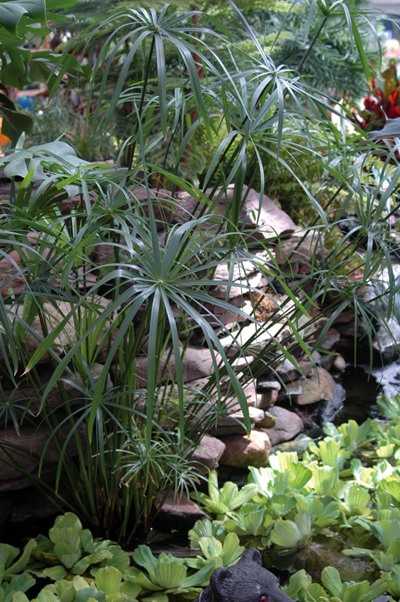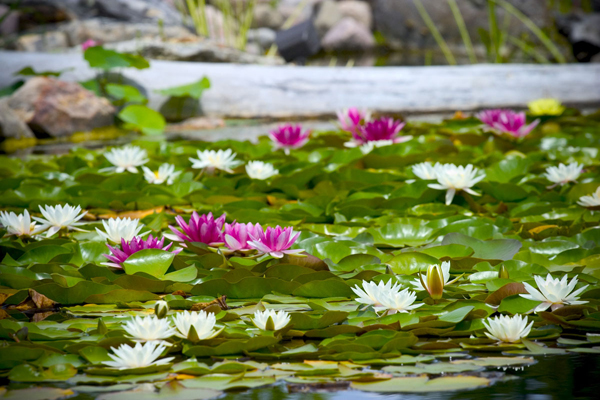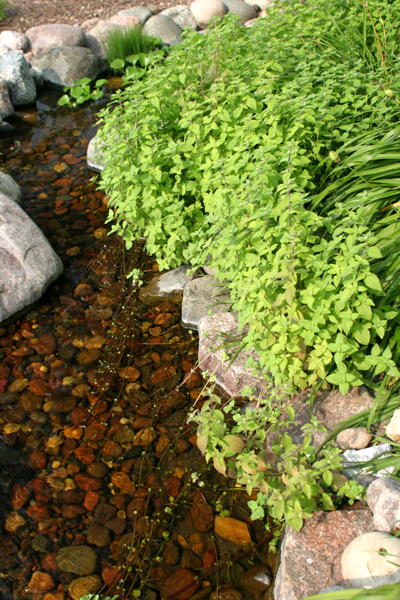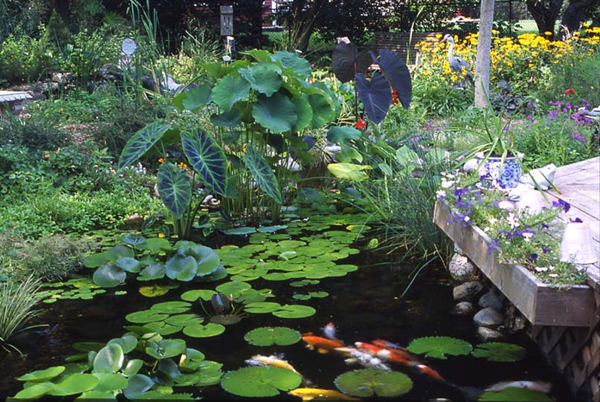Getting into Aquatic Plants

 At the start, a large number of ponds are all about the fish. From the planning stages through to completion, the goal is to create an environment in which koi and other beautiful specimens will thrive in an environment that is both balanced and self-sustaining.
At the start, a large number of ponds are all about the fish. From the planning stages through to completion, the goal is to create an environment in which koi and other beautiful specimens will thrive in an environment that is both balanced and self-sustaining.
There’s a lot that goes into making these miniature ecosystems work, from good circulation and filtration systems to including places where the fish can retreat from the sun and predators. But when all is said and done, the key to achieving ongoing, sustainable balance has less to do with technology than it does with Mother Nature and the plants included in the water and at its edges.
Let’s look at it this way: Instead of one great hobby – raising fish – a pond actually offers two once raising aquatic plants comes into focus the way it should.
Clearing the Water
Plants help balance and sustain the pond’s ecosystem by providing valuable biological filtration that removes nitrogen, ammonia, nitrates and other minerals from pond water. These excess nutrients are a frequent cause of cloudy or unsightly water conditions, and minimizing them has the added benefit of significantly reducing pond maintenance.
The great thing about aquatic plants is their variety, with options including numerous water lilies, marginal plants, floaters and submerged plants. The basic choice that faces the designer and client is between the hardy and the tropical: The hardy varieties are rugged enough to survive winters in colder climates, while tropical species are of a more delicate temperament and work well in warmer climates. (Or, of course, there’s always the costlier option of using tropical plants as annuals in colder climate zones.)
Depending on where the pond is and the preferences of the owner, here are the basic possibilities to consider:
 qWater Lilies. These plants are among the most popular of all aquatic plants and often appear as the centerpieces of a well-appointed watergardens. The leaves are beautiful, the flowers can be breathtaking, and their structures also provide valuable shade that helps cool a pond while providing refuge for fish. Anywhere from 30 to 60 percent of the water surface can be covered with these aquatic plants.
qWater Lilies. These plants are among the most popular of all aquatic plants and often appear as the centerpieces of a well-appointed watergardens. The leaves are beautiful, the flowers can be breathtaking, and their structures also provide valuable shade that helps cool a pond while providing refuge for fish. Anywhere from 30 to 60 percent of the water surface can be covered with these aquatic plants.
qMarginals. This is by far the largest grouping of aquatic plants and includes both hardy and tropical varieties such as sweet flag, marsh marigold, taro, canna, water iris and creeping jenny. Most are perennials that will come back year after
year and add not only beauty but significant biological filtration. As the name implies, these plants grow mainly at the edges of ponds, thriving in wet soil or standing water that covers the plants’ crowns to depths between two and six inches.
qFloaters. These plants do just as the term implies: They float on the water’s surface with roots dangling free beneath the plant to absorb all the nutrients they need. In fact, these plants do a great job of filtering unwanted nutrients right from the water – a more direct approach than is achieved by other species that must be planted in soil to perform their filtering function.
qSubmerged. As the name clearly indicates, this group of plants thrives below the water surface. Commonly referred to as oxygenators, these species (including elodea, anacharis, hornwort, foxtail, cabomba and vallisneria) do in fact produce valuable oxygen during most of the day – and do in fact exist below the water’s surface, although many of them bloom and shoot flowers into the open air. For the most part, these plants absorb their nutrients directly from the water – meaning they compete with algae for nutrients and help keep the overall ecosystem in balance.
Putting It All Together
As is true in terrestrial gardens, aquatic gardens take on their best appearance when they include a good mix of plants.  Marginals are prized for blending a pond into its surrounding landscape, while water lilies provide pops of color at the water’s surface and the floaters and submerged plants help keep the water clean with less spectacular displays.
Marginals are prized for blending a pond into its surrounding landscape, while water lilies provide pops of color at the water’s surface and the floaters and submerged plants help keep the water clean with less spectacular displays.
There are literally dozens of possibilities to consider in each category in most parts of the country: Take some time in reviewing them all to make watergardens into all they can be for plants, fish and humans alike.
Brian Helfrich is construction manager for Aquascape, a pond equipment supplier and installation company based in St. Charles, Ill. For more information, visit www.aquascapeinc.com









